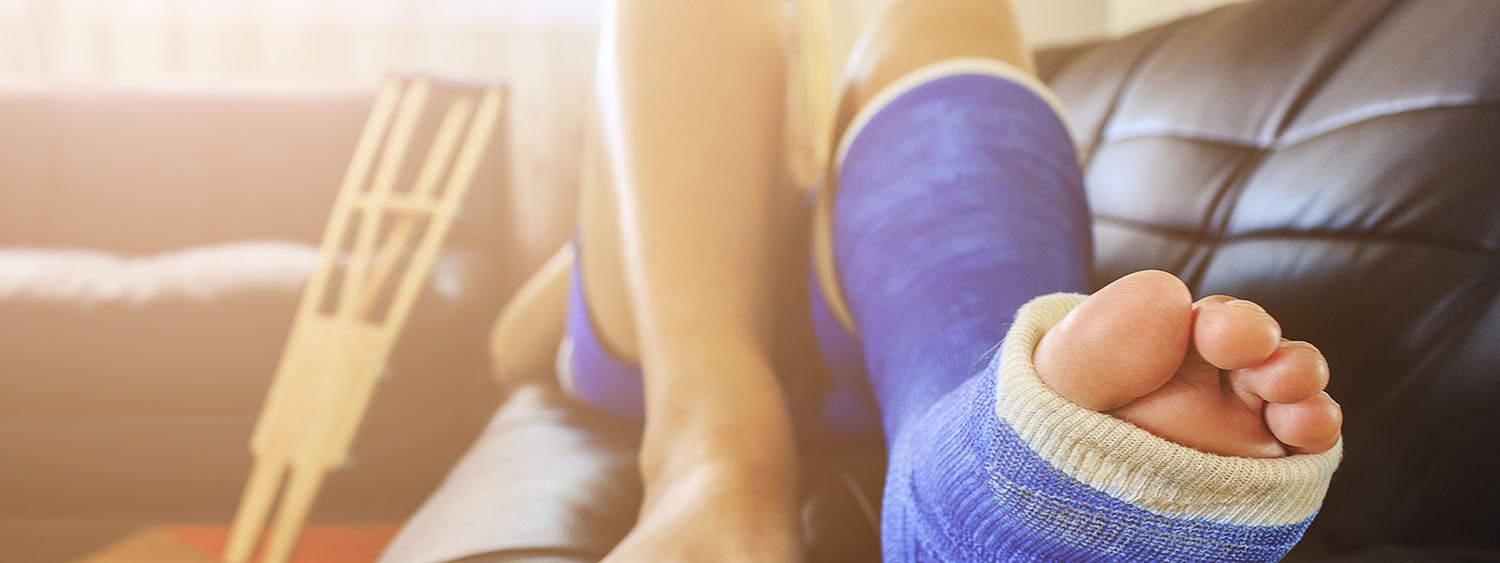Muscle atrophy
Muscle loss, or muscle atrophy, is a loss of muscle mass. It becomes visible over time. Muscle wasting causes limitations in everyday movements and can have various causes.
What is muscle loss? What causes muscle loss and what treatment methods are available? Symptoms, progression, and diagnosis at a glance…
What is muscle atrophy?
Muscle loss, known in technical terms as muscle atrophy, means that muscle mass is lost. Muscle wasting results in reduced strength. Muscle weakness leads to difficulties with movements, such as walking or climbing stairs. Muscle loss may be caused by immobilisation (e.g. in a plaster cast), or by neuromuscular diseases.
Muscle diseases cause muscle cells to die. Immobilisation causes the cells to shrink. In both cases, the muscle breaks down and is transformed into fat and connective tissue. Targeted training to restore muscle strength is particularly important in this case.
Causes of muscle atrophy
The most common causes of muscle wasting are physical inactivity due to pain or bed rest, and long-term immobilisation of a joint, for example, with a cast or splint. The aging process may
also cause muscle degradation. This is called sarcopenia.

Physical inactivity or immobilisation of individual joints, for example, with plaster casts, often cause muscle atrophy.
Muscle weakness is not always caused by inactivity. In some cases, it may be caused by a neuromuscular disease . Neuromuscular means that the nerve or muscle is impaired by metabolic disorders, genetic disorders, or nervous system
disorders.
Depending on the cause, a distinction is made between different forms of muscle atrophy:
Myogenic muscle atrophy
The cause of the atrophy is a muscle disorder (greek: myo). Since the muscle can be affected in different ways, the terms vary:
- Muscular dystrophy
Diseases include Duchenne muscular dystrophy, Becker-Kiener muscular dystrophy, and limb-girdle muscular dystrophy.
- Myositis (inflammation-related muscle disorders)
Myositis can occur in the context of diseases such as sarcoidosis or syphilis, but also as an independent disease (e.g. polymyositis).
- Mitochondrial diseases
These diseases involve an impairment of energy production in the cell organelles (mitochondria) of the muscle.
Neurogenic muscle atrophy
In this case, the atrophy is caused by a disorder of the afferent nerve (motor neuron), or of the connection point to the muscle (synapsis).
- Myasthenia gravis (autoimmune disease)
The signal from the nerve to the muscle is disrupted by autoantibodies, which causes muscle loss.
- Spinal muscular atrophy (SMA)
SMA is caused by the loss of motor nerves in the spinal cord (anterior horn cell). There are different types of SMA: Werdnig–Hoffmann (SMA type 1), chronic infantile SMA (SMA type 2), Kugelberg–Welander (SMA type 3), and adult-onset SMA (SMA type 4)
- Amyotrophic lateral sclerosis (ALS)
This leads to muscle atrophy due to the degeneration (loss) of the upper or lower motor neuron.
Muscle atrophy can also be caused by a paresis or plegia due to damage to the upper motor neuron (upper MN) or lower motor neuron (lower MN). Central damage (upper MN) occurs, for example, in the case
of a stroke or multiple sclerosis. Peripheral nerve damage (lower MN) can be caused by herniated disc,
carpal tunnel syndrome (CTS), or a traumatic injury.

If muscle loss persists for a long time, exercise therapy and physiotherapy measures are essential to rebuild the muscles.
Symptoms & progression of muscle atrophy
Muscle atrophy causes a loss of muscle mass. Muscle atrophy may affect one or more muscles and results in reduced strength, i.e. muscle weakness. Typical symptoms of muscle weakness are impaired movements or actions (walking, climbing stairs, housework, etc.).
Unlike immobilisation-related atrophies and neuromuscular diseases, central or peripheral nerve damage may also cause other symptoms, such as sensory disorders. In the case of peripheral damage (lower MN), involuntary muscle twitches (fasciculations) may occur in addition to atrophy.
If the muscle atrophy is caused by an isolated trauma (stroke, cut, etc.), only the part of the muscle that is supplied by the affected nerve is wasted. In such cases, no further deterioration, possibly even improvement (reinnervation) occurs after a certain stage of atrophy. Otherwise, the progression is usually more severe in the event of early onset (e.g. in childhood) than if the disease occurs later in life. Amyotrophic lateral sclerosis and myasthenia (myasthenia gravis), which usually appear in later adulthood and progress rapidly, are exceptions to this rule.
If it persists for a longer period, the decrease in muscle thickness becomes obvious, i.e. the affected muscle or limb is thinner than the unaffected one. In many cases, a cure is not available, but the function can be improved with the help of therapeutic measures, such as physiotherapy or electrotherapy.
Therapy & rehabilitation for muscle atrophy
The cause must be clarified first. After a detailed medical history review and a neurological examination, it becomes clear if other procedures are required to make the diagnosis. Possible further examinations include:
- electromyography (EMG)
- nerve conduction velocity test (NCV)
- laboratory diagnostics (determination of creatine kinase)
- imaging techniques (X-ray, MRI, etc.)
- muscle or nerve biopsy

Electrical stimulation can be used for many forms of muscle atrophy to build up the muscle mass and prevent abnormalities of connective tissue.
In the best case scenario, the cause can be treated.
In most cases, however, the cause of the muscle loss cannot be treated (genetic defect, etc.). The focus is then on rehabilitation to improve the patient’s quality of life. Occupational therapy serves to train functions and activities of daily living (ADL training). Physiotherapyusually aims at improving strength and mobility. A speech therapist should be consulted in the event of swallowing disorders. Interdisciplinary therapeutic approaches include the provision of aids (walking aids, orthoses), breathing exercises, and exercises for the cardiovascular system.
Since a therapy frequency of several units per week is desirable, functional electrical stimulation (FES) may be useful to encourage independent training at home.
EMG-triggered stimulation can strengthen the innervated muscles, i.e. the muscles that are still supplied by the nerves. Special forms of current (low frequency, long pulse duration) can also build up denervated muscle sections that are no longer supplied by the nerves.
Functional electrical stimulation can thus help strengthen muscles in patients with various forms of muscle atrophy. It may be useful in the case of muscle loss that is caused by immobility (e.g. due to surgeries or plaster casts) in order to accelerate
muscle building. FES is also used during periods of prolonged physical inactivity (bed rest) to stop muscle loss.
If you are interested in continuing education on functional electrical stimulation and wish for a STIWELL® training directly at your institute or online, please contact us
Find out how functional electrical stimulation with the STIWELL® can be used to treat muscle atrophy.

